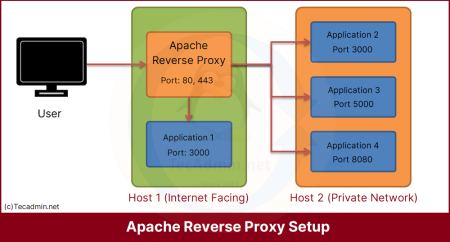Etags are like special tags or labels that Nginx web servers, which are types of software to manage websites, place on web files like pictures or pages. For example, when a user visits a website, these tags help determine if the version of the file on your computer is old or the same as the one on the website. If it’s the same, it won’t download the file again, which helps the website load faster. It’s like seeing if your daily newspaper has already been delivered. If you see it’s the same date as today, you know you don’t need another copy.
In this article, we will provide a step-by-step guide on how to disable ETags in an Apache web server. The process involves editing your Apache server’s configuration files, so make sure you have the necessary permissions to do so.
Steps to Disable ETags in Apache
Let’s follow the below steps to disable ETags in Apache carefully.
1. Backup your Current Configuration
Before making any changes, it’s always good to have a backup of existing configuration file. This helps you to easily restore the settings in case of any issues. You can find the Apache configuration file named httpd.conf or apache2.conf. The location of file depends on your system; for example, on Debian based systems you may find it in /etc/apache2/apache2.conf. Once found, create a backup:
sudo cp /etc/apache2/apache2.conf /etc/apache2/apache2.conf.bak
Replace /etc/apache2/apache2.conf with your configuration file’s actual location.
2. Open the Configuration File
Next, open the configuration file with your preferred text editor. For instance, to open it with nano, use:
sudo nano /etc/apache2/apache2.conf
3. Add the FileETag Directive
In the configuration file, search for a suitable section to add the FileETag directive. A common choice is within the <Directory> block that configures your web document root.
To disable ETags entirely, set the FileETag directive to None:
FileETag None
For example, your <Directory> block might look like this:
Options Indexes FollowSymLinks
AllowOverride None
Require all granted
FileETag None
If you want to disable ETags for specific file types only, use the <FilesMatch> block. For example, to disable ETags for JPEG and PNG images:
FileETag None
4. Save Changes and Close the File
After editing the configuration file, save your changes and close it. In nano, you can do this by pressing `Ctrl+X`, then `Y` to confirm saving changes, and finally Enter to confirm the file name.
5. Test the Configuration
Before you restart the Apache server, it’s good practice to test your configuration for syntax errors. Use the Apache’s configtest utility:
sudo apachectl configtest
If the output says Syntax OK, your configuration changes have no syntax errors.
6. Restart Apache Server
Finally, to apply your changes, restart the Apache server. On Ubuntu, use:
sudo systemctl restart apache2
On CentOS or Fedora, use:
sudo systemctl restart httpd
Conclusion
Disabling ETags in an Apache server can be a simple process when done correctly. However, always remember to backup your configurations before making any changes to avoid disrupting your server’s functionality. By following the steps provided in this guide, you should be able to disable ETags successfully.


